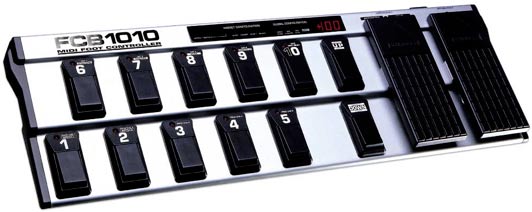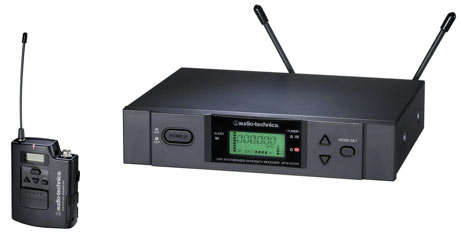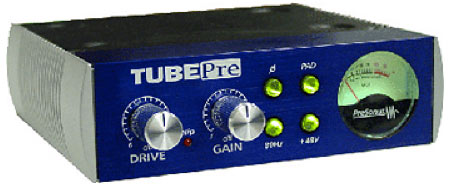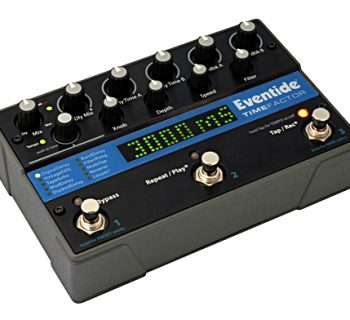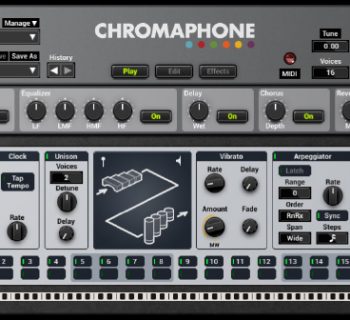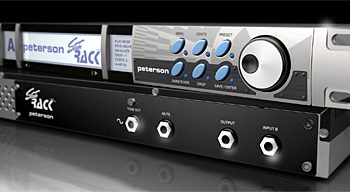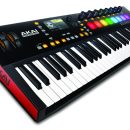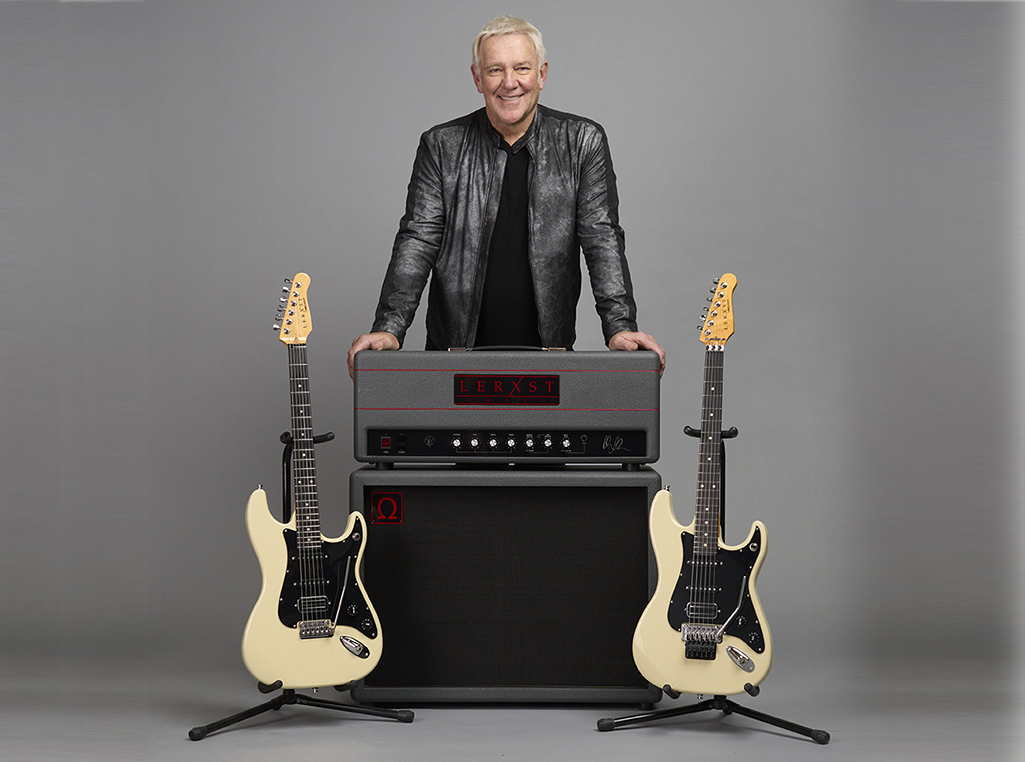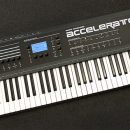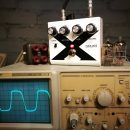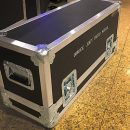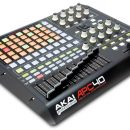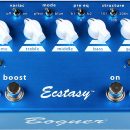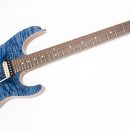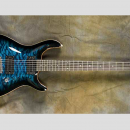| Category | Value | Rating |
| Features | 20% | |
| Usability | 25% | |
| Documentation & Support | 10% | |
| Price | 20% | |
|
|
||
| OVERALL RATING = 2.7
3.6 stars or better: Outstanding, WIHO Award |
||
The Behringer FCB1010 is a popular product with musicians just stepping up to rack systems. Its attractive price, rugged build quality, and the widespread availability of Behringer products on dealer shelves make it an easy product to pick up at your local musician’s super-store. For rack system “newbies”, and even those of us with more rack programming experience, we found the FCB1010’s programming interface to be extremely challenging to figure out, and it may scare the uninitiated away from using MIDI-controlled rack systems.
On the positive side, if you want to play deep, the FCB1010 will welcome you with open arms. You can program as many as 100 presets to send Continuous Controller (CC) messages (so much for the six or eight CC message limitations with other boards!), and each pedal is capable of performing numerous operations concurrently.
Unfortunately, there isn’t a separate mode of operation that distinguishes between Program Change mode and CC mode, so if you’re making use of multiple CC pedals, you’ll need to more carefully plan out your foot controller implementation. In our Other Comments section, we provide advice on our preferred method of implementing this foot controller in your rack system.
If you’re new to using MIDI foot controllers, we have an in-depth tutorial on the subject that you may wish to read before diving into our foot controller product reviews.
Click here to read our MIDI foot controller tutorial.
Features
![]()
- Control of up to five MIDI devices.
- Two expression pedals. Settings for the expression pedals are stored on a per-patch basis to provide flexibility in its configuration (ex. if you want these pedals to behave differently for different patches), but we would have preferred a global default behavior that could be set for each pedal, with the ability to override the settings on a per-patch basis.
- Two switch jacks for analog channel switching of amps.
- Simultaneous transmitting of up to five program changes and two CC messages per preset.
- In addition to Program Change and CC messages, a selection can also transmit Tap Tempo rates, so pressing button #1 might set your effects processor to User Preset #36 and set the tempo to 120 BPM, while pressing button #2 could also select User Preset #36 but set the tempo to 136 BPM. This is a unique feature we haven’t found in similar products.
- Rugged construction and one of the few (if any) foot controllers we’ve seen with an internal power supply – no wall wart!
- You can use the FCB1010 to trigger musical notes on your synths, but this will require complex programming. More likely, you’ll only need to utilize this feature with certain effects processors that use MIDI notes for setting Tap Tempo (most use standard CC messages, but not all).
The FCB1010 also has some shortcomings to be aware of:
-
- There is no mode of operation that toggles between CC messages and Program Change messages! Most advanced MIDI foot controllers enable you to switch from Program Change mode to CC mode instantly so that once you’ve selected a patch on your effects unit, you can then easily turn effect blocks On/Off, set Tap Tempo, Solo Boost, etc. Still other controllers provide buttons for Program Change messages and additional switches/pedals for CC messages without needing to change operating modes at all.In the case of the FCB1010, you could confusingly intermingle some buttons sending CC messages, others sending Program Change commands, and others sending combinations of both message types. Careful planning is essential for successful use of this foot controller.
- The two-digit LED display doesn’t enable you to name your presets.
- No phantom power support.
Usability
![]()
With great power comes great responsibility, and in the case of the FCB1010, the responsibility is all yours for explicitly programming every action you require beyond the default Program Change commands. In fact, compared to other MIDI foot controllers we have used at all price points, the FCB1010 required significantly more programming effort. If all you require are simple program changes and use of the expression pedals, the FCB1010 will work fine with minimal configuration effort, but configuring various CC instructions requires a tedious amount of lengthy programming (typically only a one-time ordeal). We configured a pedal to send CC messages so that it could turn an effect block On/Off in one of our processors (a TC Electronic G-Major). This simple function required approximately 15 pedal selections, some simple numeric data entry, and required paying careful attention to status lights across the top of the controller. Setting up multiple pedals to behave in this manner can take an inordinate amount of time and, with so many steps to follow, it’s easy to hit a wrong button and confuse the process. Fortunately, the FCB1010 has a Preset Copy function that enables you to copy one patch to numerous other locations in memory. We recommend that once you configure a single pedal for CC messages, you copy that patch to all the other pedals you want to enable, and then edit each of those and change the CC value.
Documentation and Product Support
![]()
The User’s Manual that ships with the FCB1010 is enough to scare the average guitar player. The information is presented in much too compact a form (small text, tight line spacing), making it very hard to follow required programming steps without repeatedly losing your place. “The Quick Guide to Programming” was much easier to follow, but you’ll still need the User’s Manual. Download this handy document from the Behringer web site and read through it prior to tackling the User’s Manual.
We were not able to figure out the actual usability of this foot controller (the lack of a separate/dedicated CC mode, for example) without calling Behringer technical support. On the plus side, their support was excellent (and they had no idea we were calling for a magazine review). We got through to an engineer in only a minute, he answered our questions, and he even emailed me an unofficial support document written by an end-user providing useful tips on programming the FCB1010 for use with our G-Major.
Price
![]()
The FCB1010 ($219.99) typically sells for near $150, which is an excellent price if this MIDI foot controller meets your needs.
Other Comments
- If you’re like us, you’ll need multiple CC pedals for turning effect blocks On/Off, setting Tap Tempo, Solo Boost, Tuner Mute, and other random capabilities of your MIDI gear. You may also use the analog switches for changing amp channels. Because there is no dedicated CC mode independent of Program Change mode, you have to remove program change instructions from the pedals you assign for use as CC switches.
- Assuming that ten pedals are enough to satisfy your lust for power, we would configure the first ten patches in the FCB1010 for CC use (or amp channel switching). Then, starting with patch #11 (bank 1, preset #1), use the pedals for Program Changes.
- In this manner, you might select patch #11 or #12 which calls up some cool settings in your effects processor, then hit the bank down button once to access your bank of CC pedals and channel switchers. In a live situation, this kind of arrangement would facilitate rapid access to your program changes and simple access to your CC settings.
- If the FCB1010 were upgradeable via a firmware download from Behringer, here’s what we would suggest that would make this foot controller infinitely more user friendly:
- Holding down the Up or Down button for 2 seconds could switch the controller out of Program Change mode into CC mode. Then, all ten pedals could be used for sending CC messages that you configure once globally. By default, each foot switch (and the two expression pedals) would be pre-programmed to transmit a specific CC number so users could easily match those values in their rack-mounted effects (or customize them). Optionally, you could plug a latch pedal (On/Off) into one of the switch jacks and it would toggle between PC and CC modes instantly.
- The expression pedals would be configurable globally for use with all presets that a user selects.
- Enthusiasts have been quite busy trying to improve upon some of the FCB1010’s shortcomings. Though we have not tested their modifications and accessories (and will not make any formal recommendations at this time), there are physical modifications that add phantom power support, firmware updates that change functionality, and even a few computer-based editors that can make your configuration tasks much simpler.
- You can learn more about these options from http://groups.yahoo.com/group/fcb1010/ and a Java-based editor can be found at http://www.ripwerx.com/RipwerxFcb1010Editor.html.
Contact Information
Behringer
www.behringer.com

